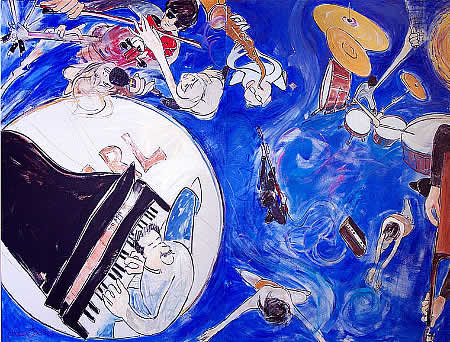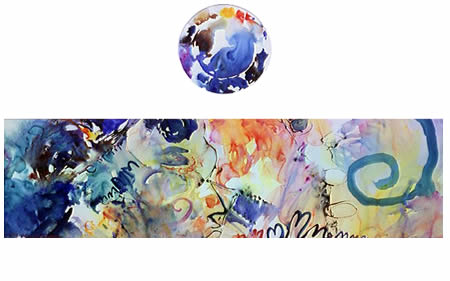Improvisation and interaction in jazz ensembles
Undoubtedly one of the most remarkable things about music, and which musicians themselves may experience, consists in being a participant of an ensemble of musos actively engaged in a musical 'jam' (to borrow from the vernacular a word which seems apt to convey the spirit of such a musical event)—one that often includes an admixture of known and improvised melodies, chord progressions, and rhythms.
A connection to the dance
At its best, one experiences a trance-like engagement within a higher abstract plane of consciousness and of abstract 'dialogue' in this universal language we know as music. No doubt this is similar to what dancers may experience who allow music and its rhythms to motivate and create spontaneous and synchronised patterns of muscle activity (and therefore motion) in response to the music within their bodies, and which thus map out a different kind of melody ('a curve through space'). Yet simultaneously they maintain a sense of naturalistic balance and flow through a dynamic moment-by-moment adjustment to their bodily form (perhaps at times conscious and at other times subconscious) which nevertheless materialises in a kind of 'morphing-equilibrium' reflected in the 'swish and pirouette' of the centre-of-gravity of their dancing paths.
Loose cords and well-chosen pitons in 'jazz mountaineering'
Improvisation thus involves a simultaneous and dynamic process of interaction and synchronisation of your own musical contribution as a 'player' (or dancer) with the music you are hearing (as a whole). Output (what you contribute) and input (what you hear or perceive) are thus in constant interrelation and mutual influence.
In jazz ensembles, improvisation can be taken even a step further by minimising the predetermined syntactical link that traditionally exists in the classical music system between various scale structures like (timing and key signatures), and to allow these to evolve more open-endedly, and to dynamically, via periods of somewhat less-resonant musical musing and searching, zero-in on new and often surprisingly powerful 'riffs', motifs, and unusual combinations of timing divisions.
Yet interspersed and interlaced within this unrepeatable and unmarked path through the musical landscape there often exist the sparser tell-tale markers (of which the skilled players are acutely aware), the synchronised accents or main chords which reaffirm the interconnection of the group, and allow each to take a new bearing upon the starting point and the musical path being mapped out, the players now transformed into a team of explorers of the musical idiom and landscape (loosely interlinked by strong chords that often synchronise with regularly-spaced pitons or anchor-points across this new abstract mountainous and epic landscape that music affords). And so, it is an open-ended journey whose paths and vistas offer infinite possibilities and avenues of exploration.
Some paintings by the author and an interactive multimedia module on the theme of improvisation and synchronicity in music and nature

Music, the Guide © Wayne Roberts. Acrylic on two canvas panels, overall dimensions 180cm (h) x 240cm (w)
The above work depicts various jazz muso friends of mine is a completely improvised visual (figurative) composition and drawing relating the concepts of improvisation in both music and visual art.

Jazz improvisation in the key as shown, © Wayne Roberts, collection of N & S. [Watercolour in two parts framed and as shown above]
The above work takes the theme of improvisation in jazz a step further and applies it more abstractly (as in music itself). The circle shows a watercolour painting of my studio palette (a white chine plate) as it often might appear during the course of a painting and contains the full complement of tube-colours (i.e. a 'scale of colours') as employed in the abstract rectilinear improvisation appearing below it.
| back to top |
next > |